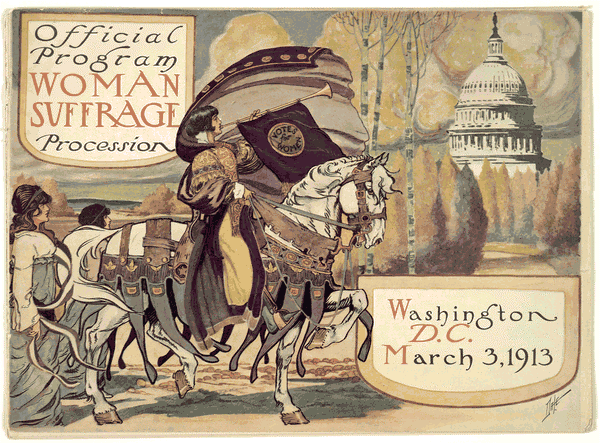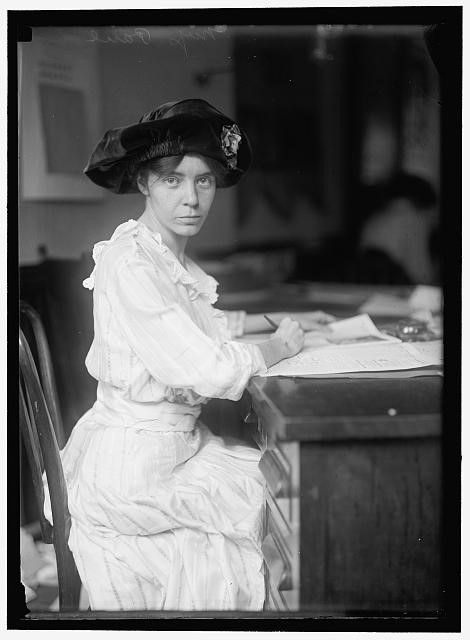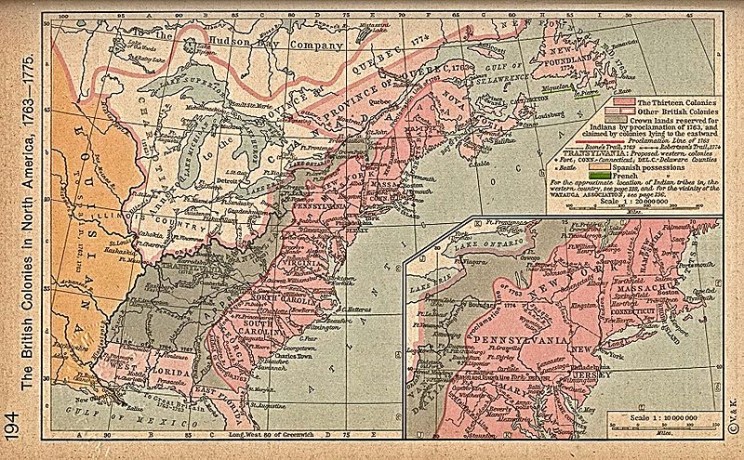By J.D. Zahniser
I saw a t-shirt the other day which brilliantly illustrated the ever-present contest over historical memory in America. The t-shirt featured the famous 1886 image of Geronimo with a few of his Apache followers, all holding weapons. The legend on the t-shirt? “HOMELAND SECURITY: Fighting Terrorism Since 1492.”
History depends on who’s telling the story. Winston Churchill once said, “History will be kind to me, for I intend to write it myself.” Men have so dominated past histories that some feminist scholars suggest the term itself is suspect, that we need more “herstory.” Competing narratives are part and parcel of any country’s recording of its own history and struggles for dominance by elites vs. laypeople, dominant groups vs. minority groups are commonplace. In America, alternative versions of history have achieved increasing levels of prominence since the 1960s, as one social movement after another emerged. As the country’s mood shifted, perceptions of its past were re-examined. The “culture wars” generated discord into the 21st century. In the last twenty years, historians have grown particularly interested in documenting the transformation of both scholarly and public memory.
On 3 March 2013, we celebrated the centennial of the great 1913 woman suffrage procession in Washington, DC. The parade vaulted the votes-for-women cause to national prominence, thanks to the skill of its young organizer, Alice Paul, and the violence which marked the actual event. When police proved inadequate to protect the line of march, an aggressive crowd of spectators pushed, pulled, and roughed up suffragists. Most marchers soldiered on through the tumult, insisting on the right to display their desire to be accorded the most fundamental right of American citizenship: the right to consent to their government by voting. After the parade, suffragists put pressure on Congress to hold the miscreants responsible. The subsequent Senate hearing into the parade turmoil kept the suffrage cause in the spotlight for another month.

Official program – Woman suffrage procession, Washington, D.C. March 3, 1913. Library of Congress.
The procession was a landmark event in 1913, but time has further elevated its importance. The parade became the first successful national political demonstration down that quintessential corridor of American power, Pennsylvania Avenue. One earlier attempt at political protest, the 1894 “Coxey’s Army,” was seen as an assault on the capital and marchers were arrested. In the twenty-first century, organizations regularly use Pennsylvania Avenue and the Capitol mall as a site for political protest, few recognizing the brave women who first claimed full citizenship rights on the same thoroughfare in 1913.
The grand procession became a shining memory for suffragists. The experience of marching—or even reading about marching—inspired many women to give more of themselves to the drive to win the vote. It made them feel part of a feminist political community. Within a year after the procession, the suffrage movement split into militant and mainstream factions. Alice Paul was at the heart—some would say was the cause—of the rupture among activists. Her National Woman’s Party (NWP), numbering in the tens of thousands, hastened victory with spectacular political protests. The National American Woman Suffrage Association (NAWSA), boasting nearly a million members by the last years of the suffrage struggle, never agreed with the NWP’s unwomanly efforts. After women won the vote in 1920, they looked back on the parade as a time before differences among suffragists drove them apart.
The memoirs and histories of the woman suffrage movement appearing after 1920 mostly ignored the divisions in the movement. Alice Paul declined to write her own memoir but masterminded the first published suffrage histories. Jailed for Freedom by Doris Stevens, appeared in September 1920, a mere month after the 19th Amendment became the law of the land. A more comprehensive account of the NWP by Inez Haynes Irwin came out in 1921. Both books were received well but left in the dust when, in 1922, Ida Husted Harper published the final volume of the massive History of Woman Suffrage (HWS), work begun in the 19th century by Susan B. Anthony. This allegedly comprehensive account, together with NAWSA leader Carrie Chapman Catt’s memoir with Nettie Schuler, Woman Suffrage and Politics (C. Scribner’s, 1923), became the pre-eminent source of record on the woman suffrage movement. Neither the NAWSA nor the NWP accounts credited the other with much influence in the movement. But the size of the NWP, once advantageous for targeted protests, left it fewer defenders as well as a smaller book-buying audience.
Alice Paul would have the last laugh. She outlived other woman suffrage leaders and, as another women’s movement gathered strength in the early 1970s, she became a living link to the first wave of feminist activism. The Equal Rights Amendment, which she had authored in 1923 and promoted for decades, was taken up by the new generation. They carried banners proclaiming “Alice Paul, We’re Here” on ERA marches which themselves echoed the 1913 suffrage parade.

Alice Paul. Photo by Harris & Ewing. Library of Congress.
As modern activists and historians unearthed women’s history for themselves, Alice Paul’s brand of spectacular politics appealed to many, particularly those also already drawn into social protest by civil rights and anti-war demonstrations. It is no accident, then, that Paul’s historical reputation began to improve in the 1970s.
Eleanor Flexner’s Century of Struggle (1959) was the first sign of a revival of interest in the history of women. Flexner acknowledged the contributions of both NWP and NAWSA to the eventual suffrage victory, though she made clear her preferences for NAWSA’s methods.
By the early 1970s, a growing interest among the new generation’s scholars in Paul and the NWP generated fresh accounts of suffrage activism, both print and oral histories. The person who once seemed a dangerous force was reborn by historians as a charismatic, courageous leader. An increasing number of dissertations on the NWP gave rise to journal articles like Sidney R. Bland’s “New Life in an Old Movement: the Great Suffrage Parade of 1913 in Washington, D.C.,” Records of the Columbia Historical Society (1971), 657-78. Christine Lunardini’s From Equal Suffrage to Equal Rights was the first dissertation published in book form, followed by Linda Ford’s Iron-Jawed Angels. Ford’s analysis of NWP militancy in particular embraced Paul’s assertive tactics as legitimate political strategy.
Also in the early 1970s, the Bancroft Library’s Regional Oral History Office recognized that suffrage activists were literally a dying breed. Alice Paul was among the surviving women who agreed to record lengthy oral histories for the Suffragists Oral History Project.
The public memory of Alice Paul was not erased by her death. A few years later, feminists in her home state took up the cause of her legacy. Members of the Alice Paul chapter of the National Organization for Women (NOW) learned that Paul’s personal effects were to be auctioned by her sole heir, a nephew. The NOW women, led by Barbara Haney Irvine, formed the Alice Paul Centennial Foundation to raise the money to purchase Paul’s estate for deposit in the Smithsonian Institution and Boston’s Schlesinger Library on the History of Women. They succeeded and several years later purchased the Paul family home in Mount Laurel, New Jersey. The Alice Paul Institute now operates as a center to preserve Paul’s historical memory and promote women’s leadership.
In 2004, the visibility of Alice Paul’s public memory reached new heights with the broadcast on HBO of the docudrama, Iron-Jawed Angels. Though many historians winced at certain popularizations, the film reached many people who knew little about the struggle for the vote or the leadership of Alice Paul. This visual recreation of women protesting and being imprisoned because they wanted to vote resonated enough to inspire continuing sales of the DVD and new viewings of the HBO drama as a means for feminist institutions to raise money.
As the centennial of the suffrage victory approaches in 2020, I expect to see more evidence that the memory of Alice Paul and the woman suffrage movement is contested territory. But that is the nature of historical memory.
J.D. Zahniser is an independent scholar. She holds a doctorate in American and Women’s Studies. She is the co-author of Alice Paul: Claiming Power with Amelia R. Fry, an oral historian at Regional Oral History Office, Bancroft Library, University of California, Berkeley.
Subscribe to the OUPblog via email or RSS.
Subscribe to only American history articles on the OUPblog via email or RSS.
The post Historical memory, woman suffrage, and Alice Paul appeared first on OUPblog.



